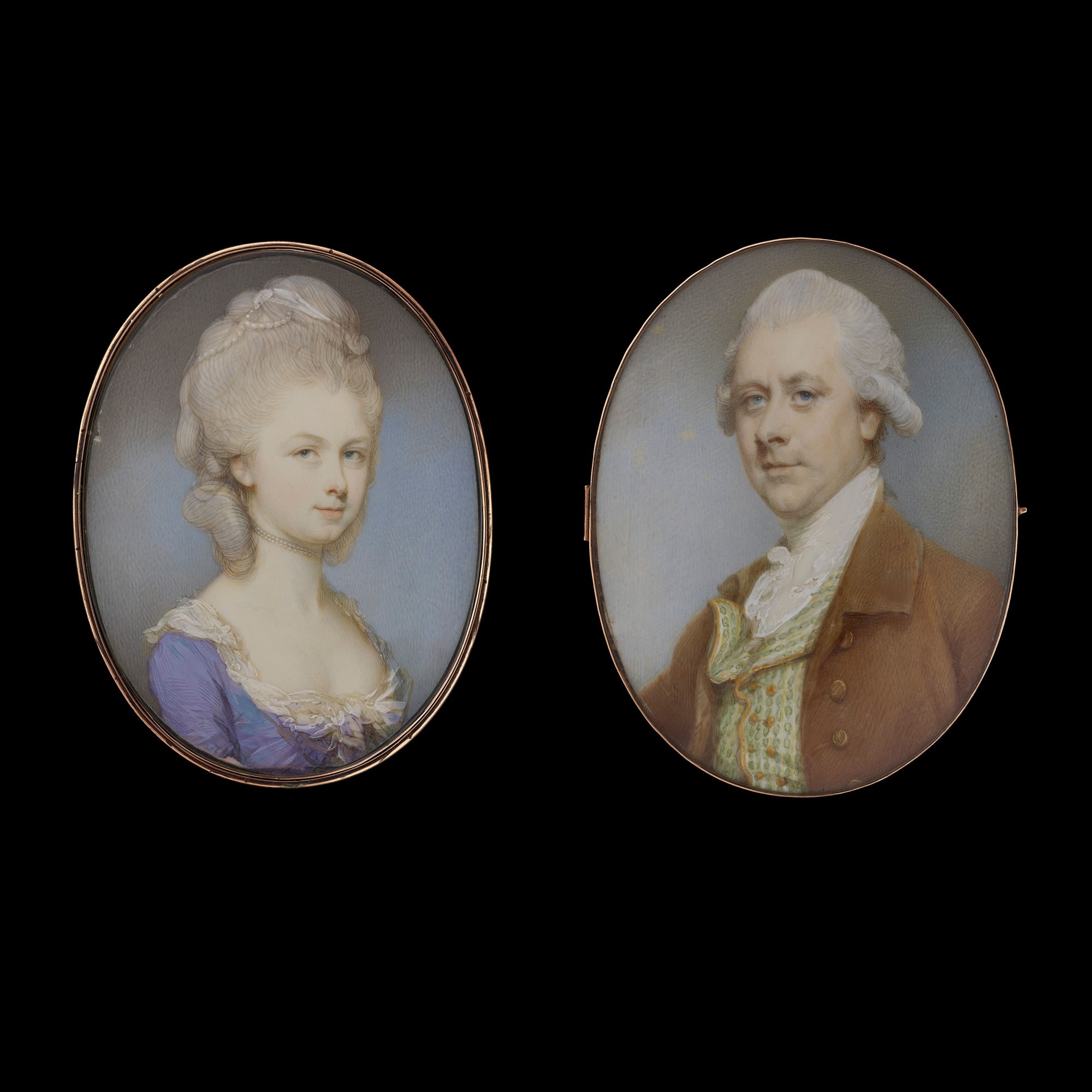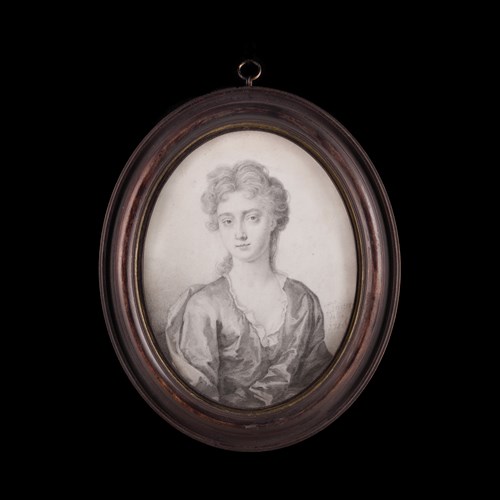Marketplace
A pair of portraits, probably husband and wife; circa 1779
JEREMIAH MEYER R.A.
A pair of portraits, probably husband and wife; circa 1779
The Limner Company : Portrait Miniature
Date Circa 1799
Medium Watercolour on ivory
Dimension 6.7 cm (2⁵/₈ inches)
It is extremely rare to find a surviving pair of portraits given their reciprocal purpose. Here, a pair of portraits, likely showing husband and wife, have been painted in a relatively large format as a duo and may have always hung together. Although we do not know the names of the sitters, the miniatures, based on their costume and technique, would appear to date to the late 1770s when Meyer was at the height of his career.
Born in Germany, Meyer moved to England at an early age and settled with his family in London. His early training was with the enamellist Christian Friedrich Zincke, but his mature works, such as these, display little of the hard, stippled bright colours of enamel painting. Instead, Meyer was one of the first miniaturists to exploit the support of ivory, using transparent washes to allow the delicate tones of the ivory to show luminescence through the paint. He only used opaque colours for detail – the thicker white paint used here to describe the delicate lace of the lady’s cap and gentleman’s cravat is typical of his technique. Meyer was the oldest of a group of artists, including Richard Cosway, John Smart and Richard Crosse, all born around the same date, who attended William Shipley’s new drawing school, the first such school in London. After his expensive apprenticeship with Zincke, it seems that he also spent time at the informal St. Martin’s Lane ‘Academy’ run by William Hogarth. As one of the founding members of the Royal Academy, which opened in 1769, Meyer was one of a new generation of miniaturists who would present their art form in direct competition with oil painters. In 1774, one critic noted ‘[His] miniatures excell all others in pleasing Expression, Variety of Tints and Freedom of Execution’.
In 1764, Meyer was appointed miniature painter to Queen Charlotte and painter in enamel to King George III. This secured his place as primary miniaturist for the royal family and improved his ability to secure this position as he was much in demand. The scale of this pair would have been rare at this date and suggests an expensive commission of importance.
Born in Germany, Meyer moved to England at an early age and settled with his family in London. His early training was with the enamellist Christian Friedrich Zincke, but his mature works, such as these, display little of the hard, stippled bright colours of enamel painting. Instead, Meyer was one of the first miniaturists to exploit the support of ivory, using transparent washes to allow the delicate tones of the ivory to show luminescence through the paint. He only used opaque colours for detail – the thicker white paint used here to describe the delicate lace of the lady’s cap and gentleman’s cravat is typical of his technique. Meyer was the oldest of a group of artists, including Richard Cosway, John Smart and Richard Crosse, all born around the same date, who attended William Shipley’s new drawing school, the first such school in London. After his expensive apprenticeship with Zincke, it seems that he also spent time at the informal St. Martin’s Lane ‘Academy’ run by William Hogarth. As one of the founding members of the Royal Academy, which opened in 1769, Meyer was one of a new generation of miniaturists who would present their art form in direct competition with oil painters. In 1774, one critic noted ‘[His] miniatures excell all others in pleasing Expression, Variety of Tints and Freedom of Execution’.
In 1764, Meyer was appointed miniature painter to Queen Charlotte and painter in enamel to King George III. This secured his place as primary miniaturist for the royal family and improved his ability to secure this position as he was much in demand. The scale of this pair would have been rare at this date and suggests an expensive commission of importance.
Date: Circa 1799
Medium: Watercolour on ivory
Dimension: 6.7 cm (2⁵/₈ inches)
Provenance: Sotheby’s, London, 7 February 1996, lot 236;
Private Collection, UK.
More artworks from the Gallery




-Portrait of a Gentleman, wearing gilt-edged armour and lace jabot, his blond hair worn long_T638670356304195467.JPG?width=500&height=500&mode=pad&scale=both&qlt=90&format=jpg)


-An oil portrait of Charles I (1600-1649) with 16 costume ‘mica’ talcs_T638688406625672868.JPG?width=500&height=500&mode=pad&scale=both&qlt=90&format=jpg)

 Way (1746-1825), in a pearl-bordered cream silk dress with a fur-bordered pink surc_T638862583741236481.JPG?width=500&height=500&mode=pad&scale=both&qlt=90&format=jpg)